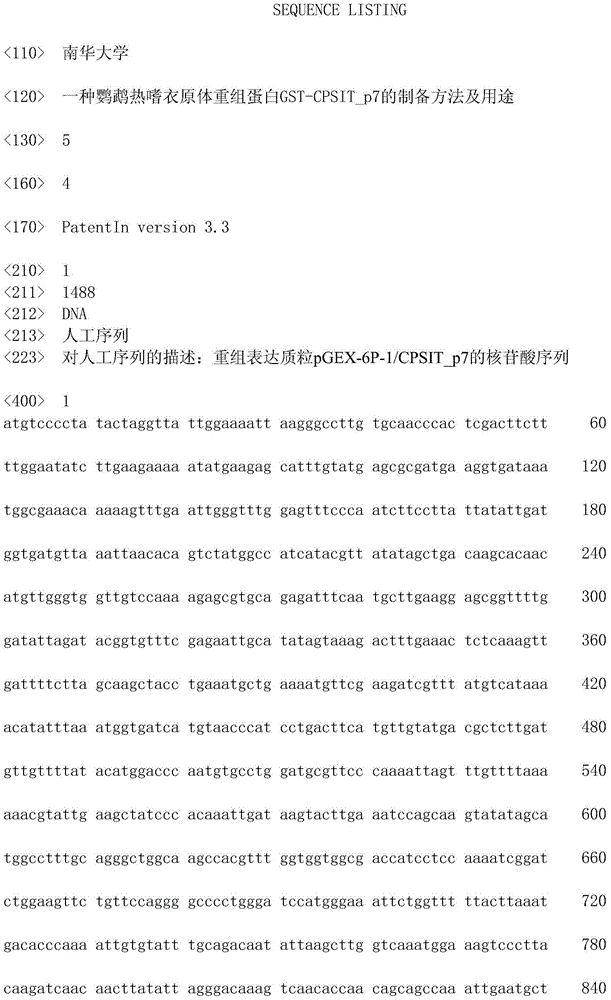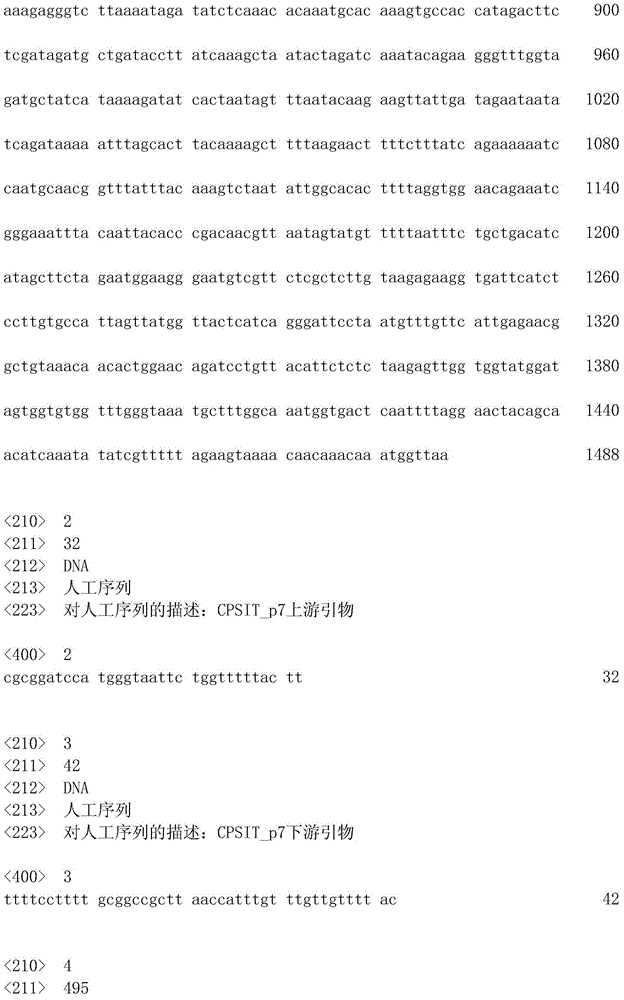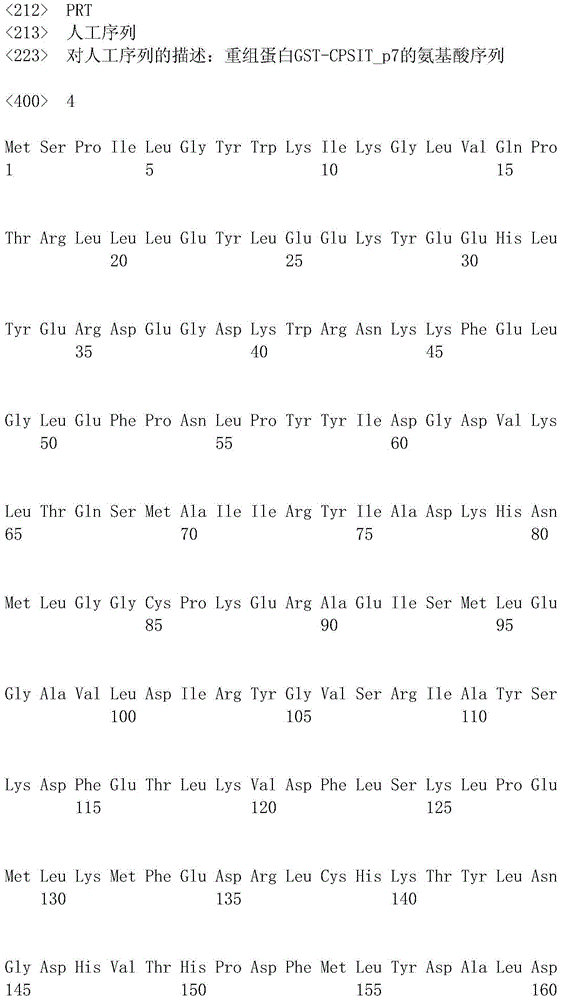Preparation method and application of chlamydophila psittaci recombinant protein GST-CPSIT_p7
A technology of recombinant protein and chlamydia, applied in the field of genetic engineering, can solve the problems of unclear pathogenic mechanism of Cps, repeated infection, pathological damage, etc., to meet the needs of clinical diagnosis, improve sensitivity, and easy to operate
- Summary
- Abstract
- Description
- Claims
- Application Information
AI Technical Summary
Problems solved by technology
Method used
Image
Examples
Embodiment 1
[0050] A preparation method for the recombinant protein GST-CPSIT_p7 of Chlamydia psittaci, comprising the following steps:
[0051] Step 1: Construct the recombinant expression plasmid pGEX-6P-1 / CPSIT_p7: Construct the recombinant expression plasmid pGEX-6P-1 / CPSIT_p7: Take the DNA of the Cps 6BC strain as a template and design the specific primers for CPSIT_p7:
[0052] Upstream primer, 5'-CGCGGATCCATGGGTAATTCTGGTTTTTACTT-3'; Downstream primer, 5'-TTTTCCTTTTGCGGCCGCTTAACCATTTGTTTGTTGTTTTAC-3';
[0053] After pre-denaturing the CPSIT_p7 region at 94°C for 5 minutes, it was denatured at 94°C for 30 seconds, annealed at 52°C for 45 seconds, and extended at 72°C for 120 seconds for 30 cycles. After the last cycle, it was extended at 72°C for 2 minutes to terminate the reaction and complete the PCR amplification. Increase, separate the polymerase chain reaction product through agarose electrophoresis, and purify the obtained PCR amplification product, comprising the following ste...
Embodiment 2
[0072] Example 2: Preparation and Performance Test of the Kit for Detecting Chlamydia psittaci Infection
[0073] The recombinant protein GST-CPSIT_p7 can be applied in the kit for detecting Chlamydia psittaci infection, as the antigen in the kit components for detecting Chlamydia psittaci infection, the antigen is labeled with colloidal gold, and the CT is measured by colloidal gold method Antibody. The preparation method of the kit that detects psittacosis chlamydia infection:
[0074] (1) Take 1.0g of HAuCl 4 4H 2 O is dissolved in 100ml purified water to make 1% chloroauric acid solution; get 1ml of 1% (mass concentration, mass concentration is not specified in this application) chloroauric acid solution into 100ml boiling water, add 2ml, 1% of trisodium citrate, and continue to boil for 30 minutes to synthesize colloidal gold; take 6ml of the synthesized colloidal gold solution, and scan it at 400-700nm; take 406ml of the synthesized colloidal gold of about 30nm 2 CO ...
PUM
 Login to View More
Login to View More Abstract
Description
Claims
Application Information
 Login to View More
Login to View More - R&D
- Intellectual Property
- Life Sciences
- Materials
- Tech Scout
- Unparalleled Data Quality
- Higher Quality Content
- 60% Fewer Hallucinations
Browse by: Latest US Patents, China's latest patents, Technical Efficacy Thesaurus, Application Domain, Technology Topic, Popular Technical Reports.
© 2025 PatSnap. All rights reserved.Legal|Privacy policy|Modern Slavery Act Transparency Statement|Sitemap|About US| Contact US: help@patsnap.com



